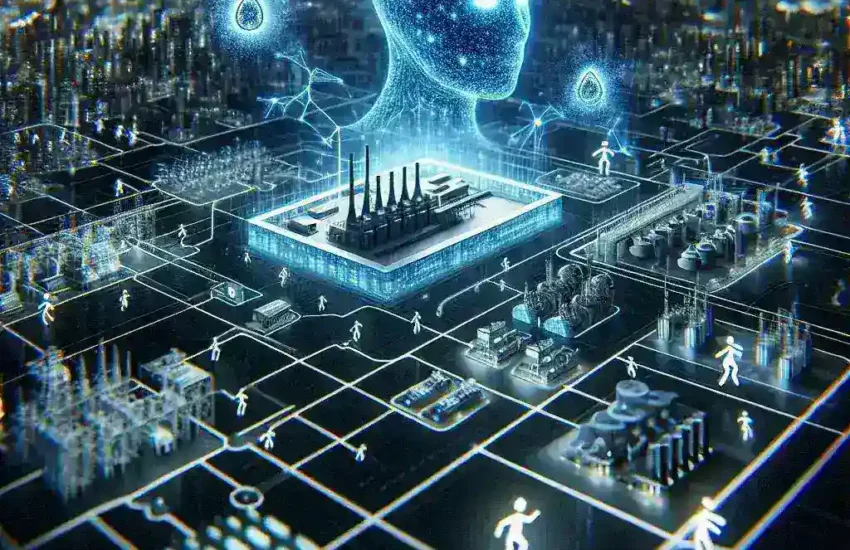In today’s digital age, the importance of securing critical infrastructure cannot be overstated. With increasing connectivity and dependency on digital systems, the threat landscape for essential services such as power grids, water supplies, and transportation systems has expanded. Artificial Intelligence (AI) is emerging as a powerful tool to bolster cybersecurity efforts, providing robust defense mechanisms against sophisticated cyber threats.
The Growing Threat Landscape
Critical infrastructure systems are enticing targets for cybercriminals, hacktivists, and state-sponsored actors. As these systems become more integrated with Internet-of-Things (IoT) devices and cloud-based solutions, their vulnerabilities increase. A successful attack on these systems can lead to catastrophic consequences, including widespread outages, financial losses, and even threats to national security.
Why AI in Cybersecurity?
Artificial Intelligence brings a host of benefits to the cybersecurity domain:
- Real-time Threat Detection: AI can process vast amounts of data in real time, identifying anomalies that may indicate a potential cyber threat. This allows for immediate action to mitigate potential damage.
- Behavioral Analysis: AI can learn and understand the normal behavior patterns of users and systems, making it easier to spot deviations that could signify malicious activity.
- Predictive Analytics: By analyzing trends and data patterns, AI can predict and pre-empt potential threats before they manifest, enhancing the proactive capabilities of cybersecurity systems.
- Automation and Efficiency: AI-driven systems can automate routine cybersecurity tasks such as patch management and network monitoring, freeing up human resources for more complex problem-solving tasks.
AI Applications in Cybersecurity for Critical Infrastructure
1. Threat Intelligence and Response
AI can significantly enhance threat intelligence by collecting and analyzing data from various sources, including dark web forums, open-source information, and internal network data. This enables a deeper understanding of emerging threats and provides actionable insights for timely responses.
2. Anomaly Detection
Anomaly detection systems powered by AI can continuously monitor network activity for unusual patterns that may indicate a security breach. By leveraging machine learning algorithms, these systems can differentiate between benign anomalies and potential security threats, reducing false positives and enhancing detection accuracy.
3. Predictive Maintenance
AI can predict hardware failures and system malfunctions before they occur, reducing downtime and ensuring the continuous operation of critical infrastructure. Predictive maintenance uses data from various sensors and logs, applying machine learning models to forecast potential issues and schedule timely interventions.
4. Incident Response and Recovery
AI-driven systems can automate the initial phases of incident response, such as isolating affected systems, collecting forensic evidence, and initiating containment measures. This immediate response is crucial for minimizing damage and reducing recovery times.
Challenges and Considerations
While AI offers promising capabilities for enhancing cybersecurity, several challenges need to be addressed:
- Data Privacy: The integration of AI systems requires access to large datasets, which may include sensitive information. Ensuring data privacy and compliance with regulations is essential.
- Algorithm Bias: AI models are only as good as the data they are trained on. Bias in training data can lead to uneven performance and missed detections in AI-driven cybersecurity systems.
- Adversarial Attacks: Cyber adversaries may attempt to exploit or manipulate AI models, known as adversarial attacks. Robust defenses against such tactics must be developed.
- Resource Intensity: Implementing AI solutions can be resource-intensive in terms of computational power and specialized expertise. Organizations must evaluate the cost versus benefit.
The Future Outlook
The integration of AI in enhancing cybersecurity for critical infrastructure is a growing trend that promises to deliver improved resilience against cyber threats. Moving forward, several key developments can be expected:
1. Advanced Machine Learning Models: Research and development in machine learning will likely lead to more advanced and accurate models for threat prediction, detection, and response.
2. Collaborative Defense Mechanisms: AI-enabled platforms could facilitate greater collaboration among industries, government agencies, and international bodies to share threat intelligence and best practices.
3. Autonomous Response Systems: The evolution of AI-driven cybersecurity may lead to fully autonomous systems capable of defending against threats without human intervention, significantly reducing response times and minimizing human error.
4. Ethical AI and Transparency: As reliance on AI increases, there will be growing emphasis on ethical AI practices and transparency in AI-driven decision-making processes to build trust and ensure fairness.
Conclusion
The future of AI in enhancing cybersecurity for critical infrastructure is promising and holds the potential to revolutionize how we protect essential services from cyber threats. By harnessing the power of AI, organizations can achieve unprecedented levels of security, ensuring the resilience and safety of critical infrastructure in an increasingly digital world.

